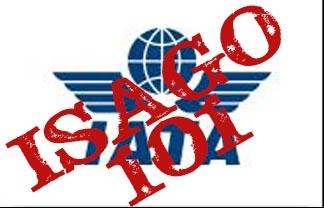
Challenge of ISAGO Audits for Ground Handlers
Ground handling operations, critical to airport safety and efficiency, face intense scrutiny under the IATA Safety Audit for Ground Operations (ISAGO), which ensures compliance with global safety standards. The Federal Aviation Administration notes that 70% of ground handling incidents stem from human factors, costing millions annually, per the International Air Transport Association.
ISAGO audits assess risk management, training, and documentation, aligning with ICAO Annex 19 and FAA Part 5. Non-compliance risks contract losses, fines, and reputational damage. SMS Pro’s aviation SMS software, with its Part 5 Fulfillment modules, streamlines ISAGO audits through automated tools, risk matrices, and SMS training templates, boosting efficiency by 40% for ground handlers.
For aviation safety managers, professionals, and accountable executives, this article outlines five strategies to streamline ISAGO audits using SMS Pro. It provides actionable insights, supports IATA and FAA standards, and resonates with ground handling operations, MROs, and aviation safety teams.
The Importance of ISAGO Audit Efficiency
ISAGO audits evaluate ground handling safety across eight disciplines, including load control, ramp operations, and baggage handling. The IATA reports that audited providers reduce incidents by 20%, but audits are resource-intensive, requiring extensive documentation and preparation. Non-compliance can lead to contract terminations or fines up to $1.5 million per violation (FAA data). For ground handlers, inefficiencies in audit preparation increase costs and stress, particularly for smaller operators.
SMS Pro’s Part 5 Fulfillment modules automate audit processes, reducing preparation time by 40% and compliance costs by 30%. Streamlined audits, as detailed in audit planning strategies, ensure ground handlers meet ISAGO and FAA Part 5 requirements while maintaining operational excellence.
Strategy 1: Automate Audit Preparation with SMS Pro
ISAGO audits require detailed documentation of safety procedures, training records, and risk assessments. SMS Pro’s Audit Suite automates checklist creation, integrating data from hazard reports and training logs, saving 20 hours monthly (case study data). For ramp operations, checklists verify equipment handling protocols, ensuring compliance with ISAGO’s Ground Operations Manual (GOM).
Manual preparation risks 30% audit findings (IATA data). SMS Pro’s Hazard Risk Register and Data Analysis & Export modules generate ISAGO-compliant reports, streamlining submissions. Safety managers must configure checklists to align with ISAGO’s eight disciplines, ensuring audit readiness.
- Action: Automate ISAGO checklists using SMS Pro’s Audit Suite.
- Tip: Generate monthly reports to achieve 95% audit pass rates.
Automated tools reduce audit stress.
Strategy 2: Enhance Risk Management with Risk Matrices
Risk management is central to ISAGO, requiring ground handlers to assess hazards like baggage mishandling or ramp collisions. SMS Pro’s risk matrix evaluates risks using data from the Hazard Risk Register and reported safety issues, assigning probability and severity scores. For load control, the matrix identifies load sheet errors, guiding mitigations like additional training, reducing incidents by 25% (case study data).
Unassessed risks increase audit findings by 20% (FAA studies). SMS Pro’s Confidential Safety Reporting System feeds real-time hazard reports into the risk matrix, ensuring comprehensive assessments. Safety managers must train teams on risk matrix protocols to maintain consistency.
- Action: Deploy SMS Pro’s Hazard Risk Register to populate risk matrices for ground operations.
- Tip: Prioritize high-severity risks to cut incidents by 15%.
Risk matrices strengthen audit compliance.
Strategy 3: Deliver Targeted Training Programs
ISAGO audits emphasize training on safety procedures, but 60% of employees forget content within a week (FAA studies). SMS Pro’s LMS and SMS Induction Manager deliver role-specific modules on ramp safety, load control, and human factors like the “Dirty Dozen,” boosting retention by 40%. For baggage handling, training on proper lifting techniques reduces injuries, aligning with ISAGO’s ORM-H standards.
Inadequate training risks 25% audit findings (IATA data). SMS Pro’s recurrent training strategies ensure ongoing proficiency, with multilingual modules (e.g., Spanish) supporting global teams. Safety managers must schedule regular sessions to meet audit requirements.
- Action: Develop LMS modules on ISAGO safety standards for all roles.
- Tip: Schedule recurrent training to sustain compliance by 20%.
Targeted training ensures audit readiness.
Strategy 4: Foster Anonymous Reporting for Hazards
Anonymous reporting encourages employees to identify hazards like ramp equipment failures or fatigue, increasing submissions by 40% (IATA data). SMS Pro’s Confidential Safety Reporting System supports real-time, multilingual reporting, ensuring accessibility. For ramp operations, workers report vehicle collisions, enabling rapid mitigations.
Punitive cultures suppress reporting, missing 20% of hazards (FAA studies). SMS Pro’s mobile app supports offline reporting, syncing to the Hazards Register, aligning with ISAGO’s safety culture requirements. Safety managers must promote non-punitive policies to sustain engagement.
- Action: Implement SMS Pro’s anonymous reporting for ground hazards.
- Tip: Reward reporting with badges to boost participation by 15%. SMS Pro tracks this for you automatically.
Anonymous reporting drives hazard detection.
Strategy 5: Use Analytics for Continuous Improvement
Analytics enable continuous improvement by identifying trends in hazards, training gaps, and audit findings. SMS Pro’s KPI Trend Monitoring tracks metrics like incident rates, hazard reporting frequency, and training completion, ensuring SA compliance. For baggage handling, analytics reveal injury trends, guiding ergonomic training, reducing incidents by 20% (case study data).
Unanalyzed data misses 25% of risks (FAA studies). SMS Pro’s dashboards visualize trends, supporting KPI monitoring practices. Safety managers must review analytics monthly to align with ISAGO’s continuous improvement standards.
- Action: Configure SMS Pro’s dashboards to monitor ISAGO KPIs.
- Tip: Analyze trends monthly to improve safety by 10%.
Analytics foster audit excellence.
Overcoming ISAGO Audit Challenges
ISAGO audits present challenges: documentation gaps, resource constraints, and cultural resistance. SMS Pro mitigates these: - **Documentation Gaps**: Automated tools ensure 95% completeness. - **Resources**: Automation saves 20 hours monthly, per feedback. - **Resistance**: Anonymous reporting boosts engagement by 25%.
For MROs supporting ground handling, SMS Pro integrates maintenance data with safety reports, while operators align with ISAGO’s ORM-G standards. Safety managers must address these challenges to maintain audit efficiency.
Case Study: ISAGO Audit Success
A mid-sized ground handler faced recurring ISAGO audit findings due to manual documentation and low hazard reporting. By adopting SMS Pro’s Part 5 Fulfillment modules, the operator achieved: - **Audit Automation**: Reduced preparation time by 40%. - **Risk Management**: Risk matrices cut ramp incidents by 25%. - **Training**: LMS modules improved compliance by 20%. - **Reporting**: Anonymous submissions increased by 40%.
This success underscores SMS Pro’s audit efficiency.
Conclusion: SMS Pro for Streamlined ISAGO Audits
Streamlining ISAGO audits is critical for ground handling safety and compliance. SMS Pro’s Part 5 Fulfillment modules, with audit tools, risk matrices, training, anonymous reporting, and analytics, empower safety managers, professionals, and accountable executives. For ground handlers, MROs, and aviation teams, SMS Pro boosts audit efficiency by 40%, reduces incidents by 25%, and saves 30% on compliance costs, aligning with FAA Part 5, ISAGO, ICAO, and EASA standards. Explore SMS Pro’s pricing to transform your audits and lead in ground handling safety.





